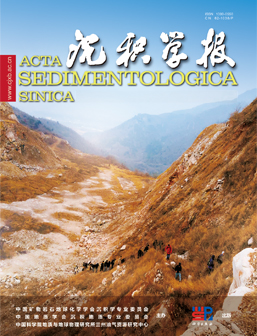Depositional Characteristics and Model of Cool-water Environment in the Middle Permian Mao-1 Member, Sichuan Basin
doi: 10.14027/j.issn.1000-0550.2025.014
- Received Date: 2024-10-19
- Available Online: 2025-06-16
-
Key words:
- Sichuan Basin /
- Mid-Permian /
- Mao-1 Member /
- cool-water sediments /
- depositional model
Abstract: [Objective] The Late Paleozoic Ice Age (LPIA), spanning from the Mississippian through the Pennsylvanian to the Early Permian, represents the largest global glaciation event of the Phanerozoic Eon. During the Middle Permian, a significant global climate shift occurred. However, the impact of this transition on the Mao- 1 Member (the first member of the Maokou Formation) in the Sichuan Basin remains unclear. [Methods] The paleotemperature of the Mao-1 Member has been recovered through outcrop section investigation, core description and thin section identification as well as the major and trace elements, in situ micro-area δ13C-δ18O, and clumped isotope analysis. And depositional characteristics and model within cool-water environment in Mid-Permian have been discussed to offer insights into global paleo-climate change. [Results and Discussions] The research results reveal that the Mao-1 Member is mostly composed of the sepiolite succession of gray-black mudstone, argillaceous limestone and limestone, in an ‘eyeball-eyelid’ structure. The ‘eyeball’ structure primarily consists of bioclastic micritic limestone, while the ‘eyelid’ structure mainly includes bioclastic argillaceous limestone and mudstone. It is primarily lime mud-supported, without non-skeletal grains but rich in heterotrophic organisms, such as bivalves, ostracods, bryozoans, and calcareous algae. In the argillaceous limestone and mudstone, the foraminifera and bryozoans are dominant, while the calcareous algae and bivalves primarily occur in the bioclastic limestone. The paleotemperature of seawater, recovered from the δ18O of bryozoan shells, ranges from 11.1℃ to 14.1℃. However, it mostly varies from 3.1℃ to 3.8℃ by the δ18O of brachiopod shells. Additionally, it remains at 19℃ through clumped isotope (Δ47) modeling. Besides, the δEu of REE within the mudstone, argillaceous limestone, micritic limestone and dolostone are all in negative anomaly. [Conclusions] All the above findings collectively suggest a cool-water depositional environment during the period of the Mao-1 Member. The cool-water sediments of the Mao-1 Member in Sichuan Basin is shaped by both global paleoclimate changes and regional tectono-depositional pattern. The LPIA and ‘two highs and one low’ topographic pattern has both exerted influences on the depositional farbics, fossil assemblages and mineral composition with a larger argillaceous content and a more thriving foraminifera population in mudstone-argillaceous limestone -limestone rhythmic alternation within the sag.
| Citation: | Depositional Characteristics and Model of Cool-water Environment in the Middle Permian Mao-1 Member, Sichuan Basin[J]. Acta Sedimentologica Sinica. doi: 10.14027/j.issn.1000-0550.2025.014 |






 DownLoad:
DownLoad: